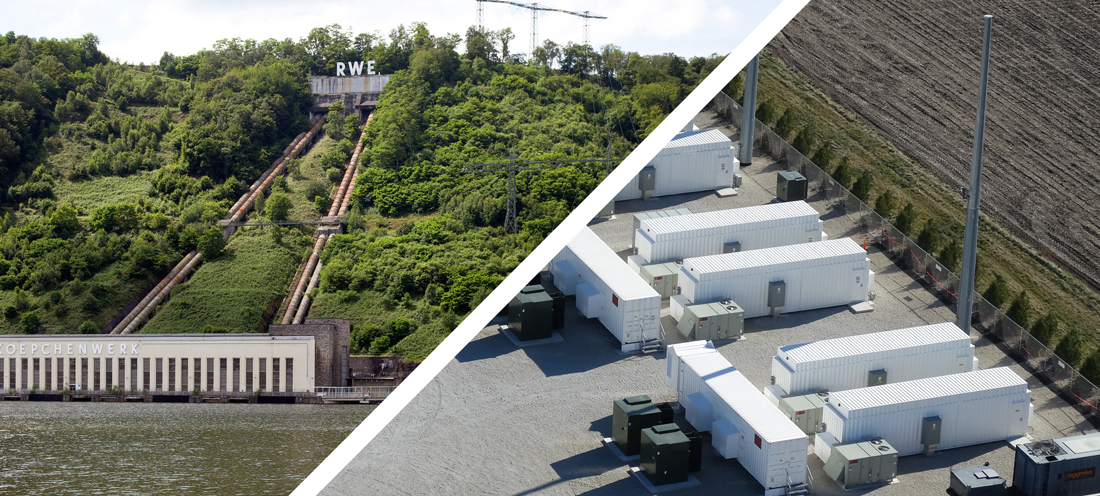Two very different storage technologies – one old, one new; one that takes years to build, one that can be built ‘within 100 days (or it’s free)’. How else do they differ, and is there a place for both?
The rapid growth of renewable energy generation has been driven by two concurrent factors: the falling levelised cost of the energy produced by wind and solar, and the retirement of a number of coal-fired power stations. It is projected that by 2035 more than two-thirds of the current fleet of Australian coal generating plants will have reached 50 years of age – so we’ll need a lot more low-emissions technology to fill the gap.
Yet, more renewable energy generation brings new challenges in an increasingly complex grid. Renewables can’t, on their own, meet the fluctuations in demand that occur throughout the day without some regulation as to when power reaches the grid. We need to turn to energy storage to make this renewable generation ‘dispatchable’ so that it is available whenever needed, on request. If the sun is not shining or the wind is not blowing, renewable energy cannot be dispatched unless it has been stored in some way.
There are a number of different types of storage. Traditional hydropower is well understood as a technology that can act as storage as well as generation, but two other options are large-scale batteries and pumped hydro energy storage. These two technologies are very different and there are some limitations involved in comparing a well-known and established technology (pumped hydro) with one that is new and developing rapidly (large-scale batteries).
How do they support the network?
Pumped hydro is based on well-established synchronous generation, providing critical ancillary services to the grid, through the provision of inertia, frequency and voltage support and sufficient fault level support.
Battery inverter technologies are still catching up on most of these fronts. The potential for batteries to provide ‘synthetic inertia’ or fast frequency response is high but this is balanced by their reliance on system strength to be able to deliver this support. They offer minimal support with fault levels but can still provide some support to system frequency and voltage regulation.
How fast can they happen?
There’s no doubt that battery storage is quicker to implement than pumped hydro. In South Australia in 2017 we saw an example of just how quickly battery storage can be deployed, with a major project going from expressions of interest to completion in less than a year. However, although speedy deployment is within the realms of theoretical possibility, in 2018 the battery trend reversed, and lead times pushed out considerably due to high demand for cells.
Pumped hydro, by comparison, is a technology that takes much longer to implement. Typically, development activities (including optimising the technical solution, environmental and social assessments, arranging finance and finalising design) take two years or more to complete, and construction takes another two to three years.
How do the capital costs compare?
Pumped hydro boasts a very low price per megawatt hour, with this cost reducing rapidly. For batteries, there’s a wide range of pricing, which is typical of a developing technology that is implemented in a variety of applications. However, the cost of lithium ion batteries is also falling, so it’s difficult to predict precisely how the costs will compare.
It’s important to remember that batteries, with the currently available technologies, will need to be replaced a number of times during the potential 100-year life of a pumped storage project, so the necessary replacements need to be factored in to the whole-of-life costs.
So, what does the future hold?
The rise of renewables will inevitably lead to a diversity of storage and supply solutions. The range of these solutions will depend on the resources of particular regions and locations. It is highly likely that the future for both batteries and pumped storage technologies will be extremely bright.
Batteries are here to stay and will undoubtedly play a significant role in future power systems as the technology develops and costs fall. However, while batteries can provide fast response times, they are yet to demonstrate their ability to provide the full range of ancillary services needed to support the grid. Pumped hydro remains a landmark, proven and reliable technology, able to meet the needs of the grid and provide sustained output for up to a century.
Ultimately, there is room for both batteries and pumped hydro (and for other storage solutions too), and they may even complement each other. Batteries are more cost-effective at delivering small amounts of stored energy over a short time at high power levels. Pumped hydro is more cost-effective at storing and releasing larger amounts of stored energy. Achieving the optimum storage solution will depend on careful planning and finding the best fit for the particular circumstances.
What is certain is that both technologies will play important roles in the development and expansion of a network powered by renewable energy.


